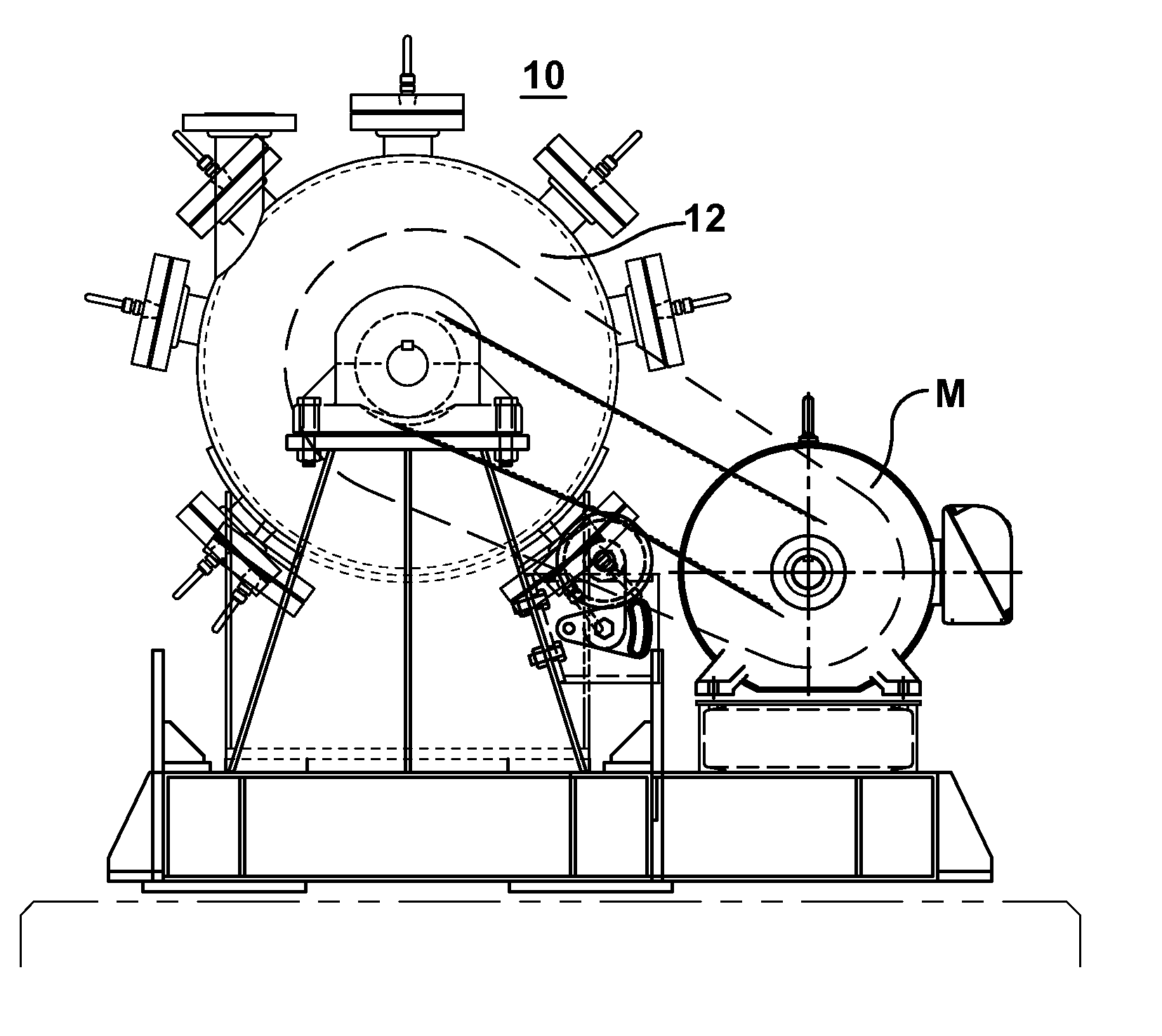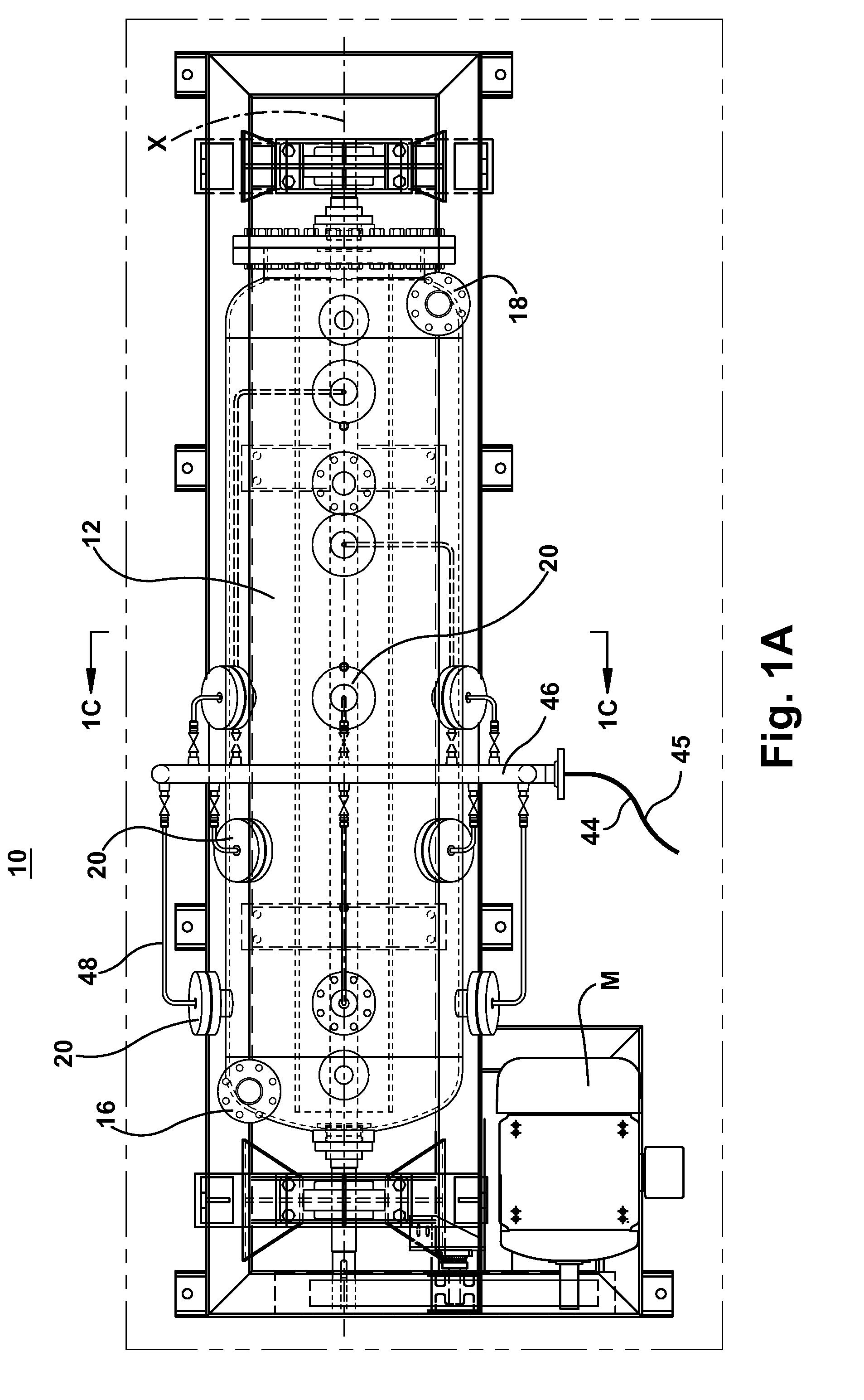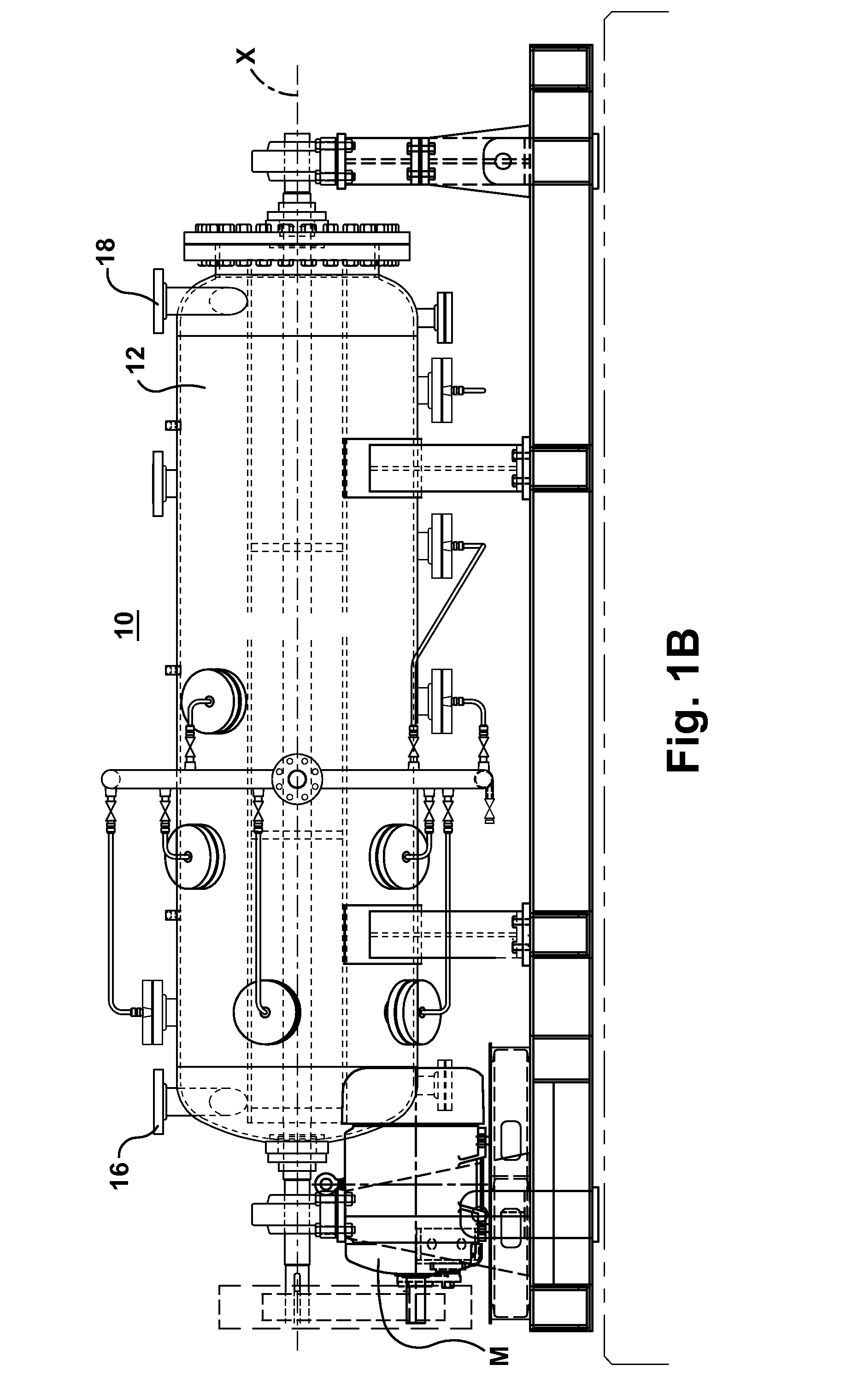Short oxygen delignification method
a technology of oxygen delignification and oxygen lignification, which is applied in the field of short process of oxygen delignification, can solve the problems of affecting paper production, high capital cost, operating cost and maintenance cost of oxygen delignification tower system, and many millions of dollars in construction cost, so as to achieve rapid and efficient mixing of flowable materials
- Summary
- Abstract
- Description
- Claims
- Application Information
AI Technical Summary
Benefits of technology
Problems solved by technology
Method used
Image
Examples
Embodiment Construction
[0035]Referring now to the drawings, a mixing assembly 10 permits mixing of the flowable material, a delignification reaction and lignin dissolving inside the mixing chamber. The flowable material includes paper pulp (a liquid and suspended solids), optional steam (for increasing reaction temperature), a basic compound and an oxygen-containing gas. The basic compound, for example, is selected from the group consisting of oxidized white liquor, sodium hydroxide, sodium bicarbonate, a peroxide compound, ozone, oxidized green liquor and combinations thereof. The mixing assembly comprises a generally cylindrical mixing chamber 12 having an interior wall 13. The mixing chamber is substantially symmetrical about a central longitudinal axis X (FIG. 1). The mixing chamber can be substantially horizontally extending. At least one inlet 16 is connected to the mixing chamber 12 through which the flowable material is introduced into the mixing chamber 12. At least one outlet 18 is connected to ...
PUM
| Property | Measurement | Unit |
|---|---|---|
| outer diameter | aaaaa | aaaaa |
| angle | aaaaa | aaaaa |
| angle | aaaaa | aaaaa |
Abstract
Description
Claims
Application Information
 Login to View More
Login to View More - R&D
- Intellectual Property
- Life Sciences
- Materials
- Tech Scout
- Unparalleled Data Quality
- Higher Quality Content
- 60% Fewer Hallucinations
Browse by: Latest US Patents, China's latest patents, Technical Efficacy Thesaurus, Application Domain, Technology Topic, Popular Technical Reports.
© 2025 PatSnap. All rights reserved.Legal|Privacy policy|Modern Slavery Act Transparency Statement|Sitemap|About US| Contact US: help@patsnap.com



